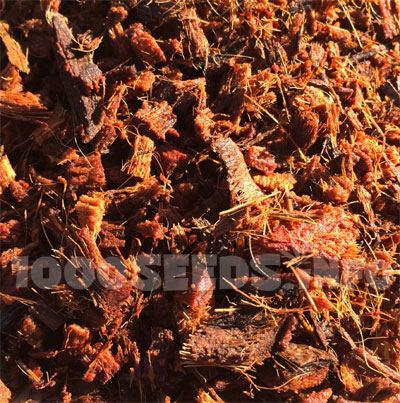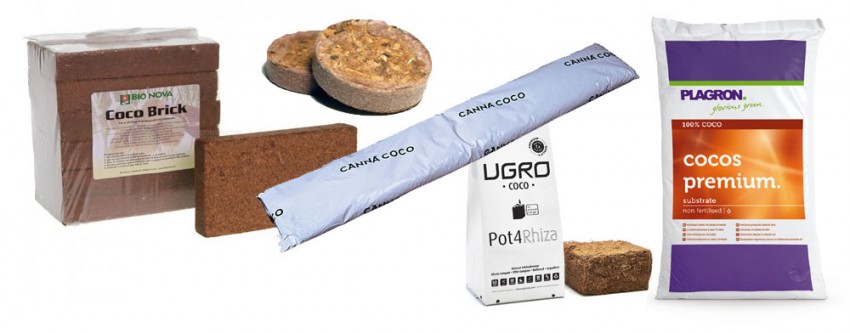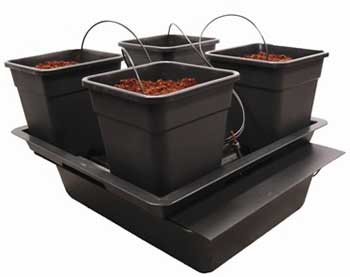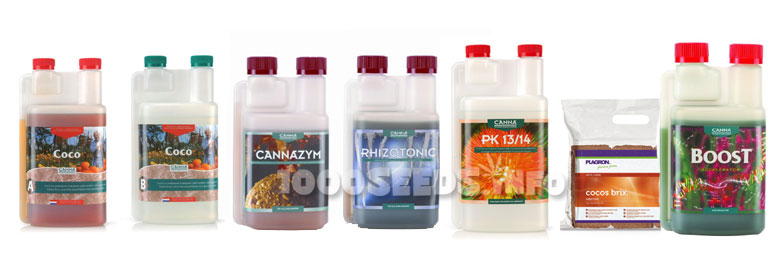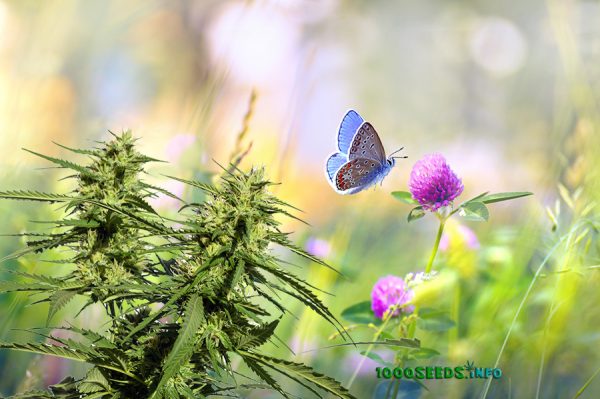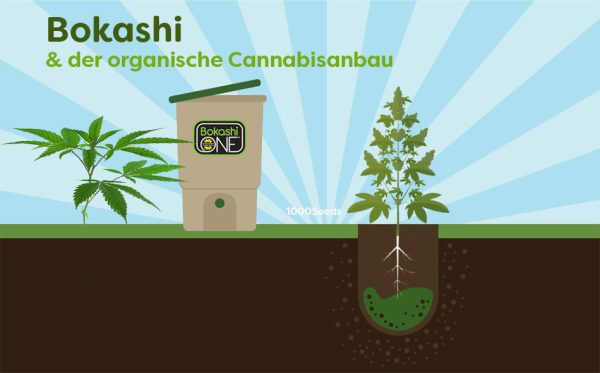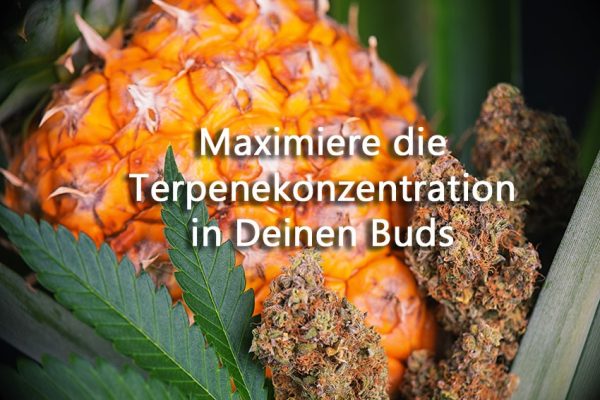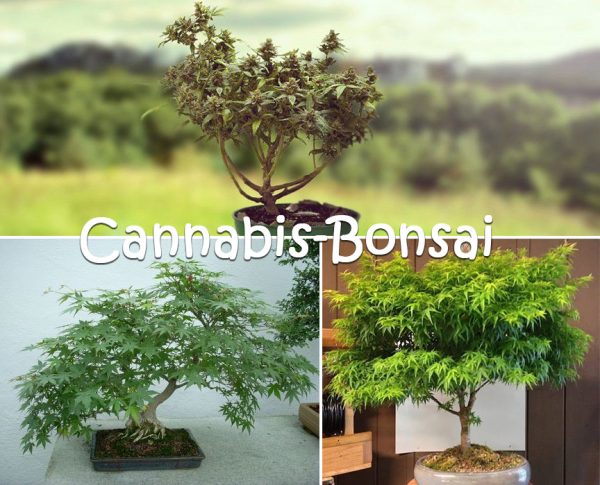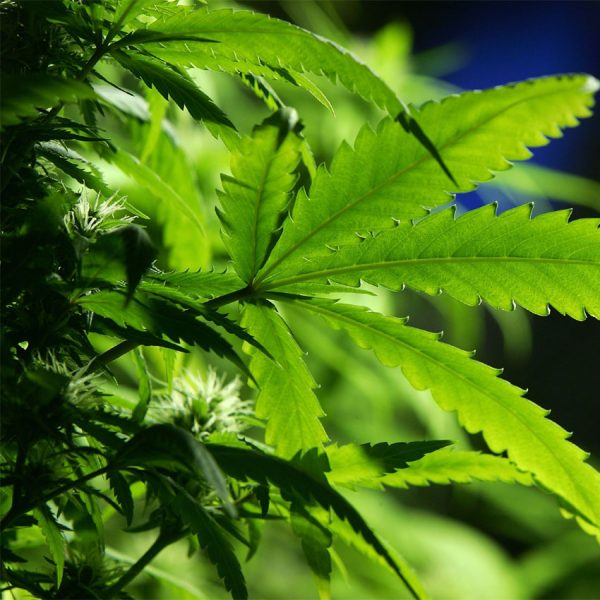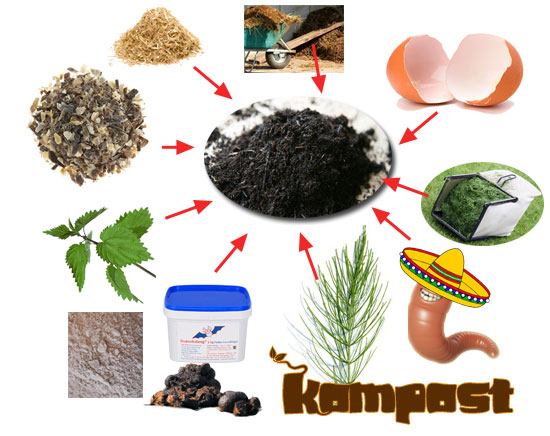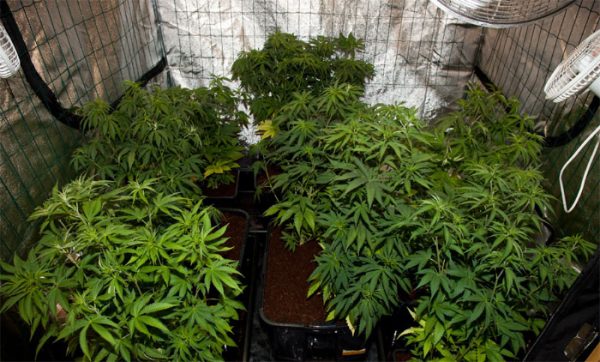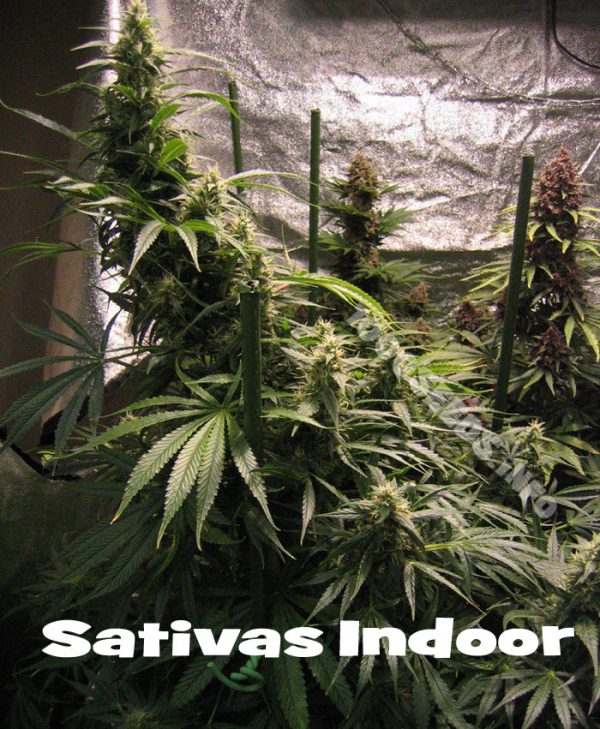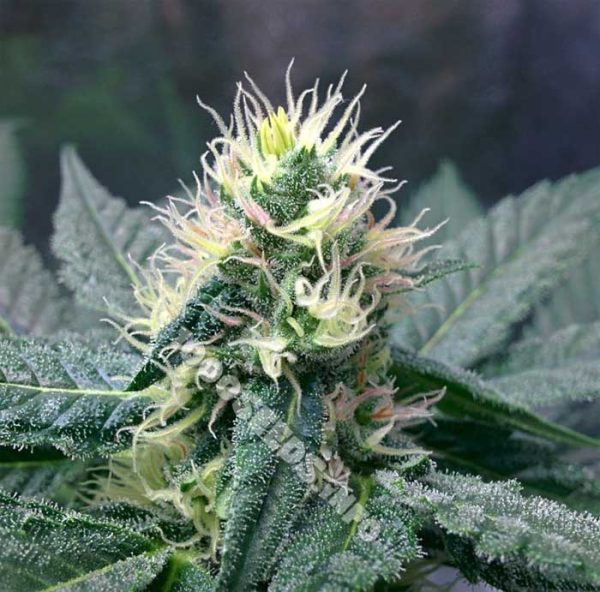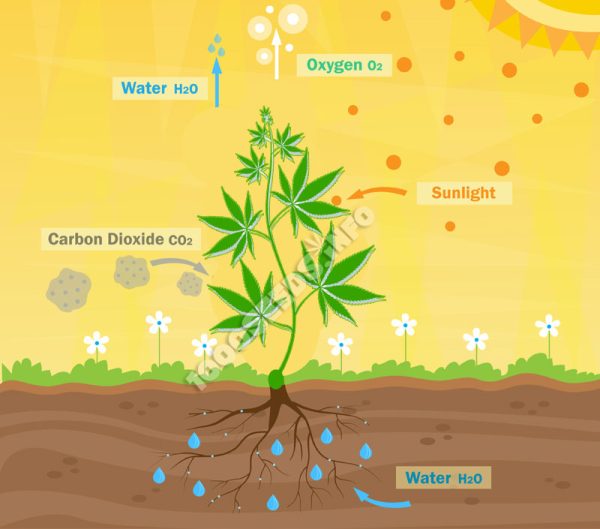Coco Guide: Cultivation with coco substrates
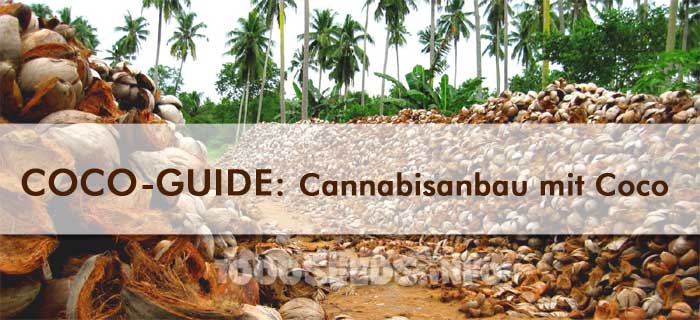
Coco substrate is made from the fibrous husk of the coconut. It is produced as a by-product of coconut production and is popular with gardeners for its benefits, especially cannabis gardeners of course.
The coco substrate usually looks like soil, but it is even more airy, lighter and brighter. It is available in bags (loose) like growing soil or pressed into convenient blocks or bricks, which makes both storage and transport much easier. For indoor growing, for example, not every grower has the possibility to store big bags of soil at home, so the small, light, odourless and handy coco blocks are a good thing and save space. The pressed coco blocks are then soaked in water when used, swell up and expand many times over into a loose and high-quality cannabis substrate. There are also the practical Coco-Slabs, which are in a plastic sleeve.
Sri Lanka and the Philippines are the main producers of coco substrates. India is the largest producer, but very little is exported from here.
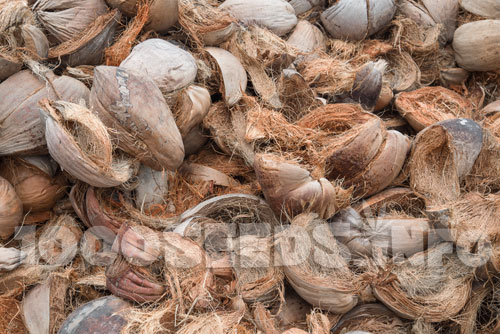
Outer shell of coconuts: from which the coco substrate is made
The advantages of Coco
In addition to its easy processing and handling, Cocos is also a renewable and environmentally friendly product that can replace peat and even surpasses it in many respects. The environmentally damaging extraction of peat can thus be prevented, Cocos is purely organic, free of chemical additives if of the right quality and is completely naturally degradable/compostable.
Coco is versatile for different cultivation methods and can be used in all development phases of the plant (germination, growth, flowering). It can store water excellently, has an airy structure, is cheap and easy to control. Coco substrates can be used to achieve very good and convincing results in a range of cultivation methods.
Coco substrate is much harder to overwater than soil. Its airy and permeable structure is ideal for cannabis roots. Excess water in the pot is quickly released and there is less risk of waterlogging. The roots can therefore develop in a much more airy environment than on soil.
In the course of growing, the volume of coco decreases little to not at all, quite in contrast to peat, which becomes less, decomposes, degrades and eventually leaves less space for air in the root zone.
The grow rate, yields and vigour of cannabis plants in coco, if done correctly, can be impressive and many growers get very good harvests from it.
Coco: soil or hydro substrate?
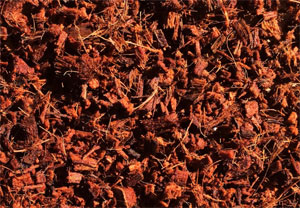 Coco substrate is soilless, is more reminiscent of earth and must hydroponic be treated. It is in a way a mixture of soil and the hydroponic substrates. Coco can be watered like soil, although special suitable hydroponic fertilisers or coco fertilisers should be used, which have been developed by some manufacturers (e.g. by CANNA, Plagron, Hesi…).
Coco substrate is soilless, is more reminiscent of earth and must hydroponic be treated. It is in a way a mixture of soil and the hydroponic substrates. Coco can be watered like soil, although special suitable hydroponic fertilisers or coco fertilisers should be used, which have been developed by some manufacturers (e.g. by CANNA, Plagron, Hesi…).
Coco substrate must also be fertilised every time it is watered because it is itself inert and can hardly store nutrients. Growing on coco is often faster than on soil.
Cultivation with Coco - substrate mixture
Many growers mix coco substrate with perlites, vermiculite or hydro correls. A mix ratio of 50% perlites to 50% coco substrate is an excellent mix ratio for the plants, but this mix is extremely airy and needs to be watered accordingly more often during the day to prevent drying out.
If you do not want to water so often every day and do not have the possibility to check the cannabis plants every now and then during the day, a mixing ratio of 75% coco to 25% perlite/correls is recommended. This also shows very good results. Overwatering as with soil is not so easy.
Coco substrate can be watered by hand, but also works excellently with dripping irrigation systems (e.g. with the Wilma dripping system) or with low tide flood tables. At low tide, watering cycles should normally be short and reduced to 1x to 2x per day.
The Wilma systems are often used with Hydro-Correls, but are also excellent for growing on Coco
The Coco-Slabs are usually used with dripping systems and are easy and practical to use.
Preparations for the Coco-Grow
Growing on coco requires a more hydroponic mindset, although its appearance is reminiscent of soil. The equipment for growing on coco is therefore the same as for hydroponic growing. And very importantly, pH, pH, pH....
If you want to grow successfully with coco, you must always check and adjust the pH value of the water. This can be done quickly and easily with a pH meter or the pH test kit, as well as the adjustment with pH-Down or pH-Up (e.g. from GHE). A EC Meter is recommended and safer, but you can do without it if necessary with the Coco-Grow. At pH meter But there's no getting around it, it simply has to be done, because coco cannot compensate for a wrong pH value like soil can, the plants would develop badly in it, constantly show some kind of deficiency symptoms and grow poorly because they cannot absorb nutrients and trace elements properly if the pH value is not right. You should not save money at the wrong end, especially as both the test kit and simple pH meters start at a small price and are absolutely affordable. The pH meter should be calibrated at least monthly so that it can always display the correct values. Also, treat it as described in the instructions and clean the probe accordingly. You can read more about this in Using and calibrating pH meters.
Fertilising on Coco
There are different and special fertilizer systems available for growing on coco. It is recommended to choose a high quality Cannabis fertiliser system fertilizer system, like the ones we carry in our shop. You can also use all fertilisers that are also suitable for hydroponic cultivation. If you use conventional fertilisers for cultivation on coco, you have to keep correcting with calcium and stomachesium to compensate for the existing deficiency of the coco substrate. For this purpose, the individual monosubstances are available in liquid (or powder) form, use them with each watering as described on the package. With the ready-made and specific coco fertilisers, you can save yourself the trouble.
e.g. Canna offers a complete fertiliser system for Coco
Irrigation at the Coco-Grow
The best and easiest way to grow on Coco is to use simple Plastic pots, Texpots or the Airpots. With the help of the pot weight, you can see very well during the grow whether you have to water again or whether there is still enough water in the substrate. If the pot with the Coco substrate is dry it becomes extremely light, if there is still enough water it is comparatively heavy. so with time and a little experience you can easily determine this by lifting the plant briefly. The plant pots should not be too small for Coco. The plants can develop best if they are in a 10-20 L pot at the beginning of flowering. Of course, this is always a question of space.
The frequency of watering always depends on different factors (like temperature, humidity, size of the plants, variety...). To give a rough estimate for manual watering with a watering can: indoors, cannabis plants on coco are watered approx. every 1-3 days when they are in 10-19 L pots. For young plants, there can be 4-7 days between waterings. It is important to check the humidity of the substrate yourself and to keep checking. As I said, it can fluctuate a lot.
Outdoors, much more frequent watering is often required, especially if the coco substrate has a high perlite content mixed in.
As the plants grow and flower, water consumption increases. Normally, daily watering is then necessary. The pot-lifting method is a good way to determine the right time to water.
Coco substrate cannot store nutrients like soil, so fertilising should start early, when the young plants have their third pair of leaves. Before that, I recommend a very weak fertiliser solution so that the little ones don't have to do without anything when they come out. Please use only a very small amount of fertiliser, a fraction of the normal amount. Otherwise, fertilise with the emergence of the 3rd pair of leaves as described in the respective fertilisation scheme. The advanced grower learns with time to adjust and adjust the exact dose of fertiliser individually to the plant variety and the requirements. Some knowledge and experience is necessary and more is not necessarily always better, on the contrary, some sativas will celebrate you if you give them only a little fertiliser.
In hydroponic coco cultivation, fertilisation should be started 2 weeks after germination with 150-300 ppm. Observe the plants closely: if there are signs of under-fertilisation, increase the fertilisation amount slightly and observe; if there are signs of over-fertilisation, apply less fertiliser accordingly and rinse the pot.
You have to balance it out and you will be able to tell after a while. After a few weeks you increase to 400-600 ppm and later maybe another time to 800-1000 ppm. I usually don't go above 900 ppm. If this sounds complicated at first, it's not, you'll figure it out quickly.
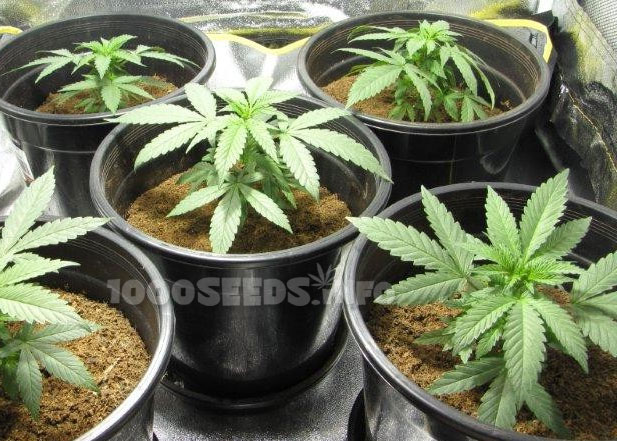
Coco substrate has the ability to absorb and release nutrients very quickly. This is one reason why cannabis plants and other plants grow so well and quickly on Coco.
The pH value when growing on coco
Most coco substrates have a pH between 5.5 and 6.5, which is excellent for cannabis plants. When fertilising and watering, the pH of the nutrient solution should be around 5.6-5.9. Coco forgives small deviations from the ideal pH value, but from 6.5 onwards, growth is clearly delayed.
Calcium and Magnesium Deficiency in Coco-Grow
Growing on coco can lead to a calcium deficiency in the plants if you use fertiliser that does not compensate for this.
In order to correct a calcium deficiency in plants, the following is classically used Cal-Max is used. This should solve the problem. However, some plants seem to need a significant amount more than indicated, so the exact dosage is not always easy. Dolomite rock powder is the ideal solution to the problem: add 1 teaspoon to 3.5 L of coco substrate on top of the plant's pot and repeat this every 6 weeks.
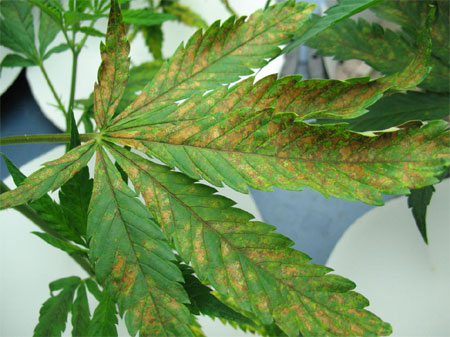
Calcium deficiency is no reason to get upset because it doesn't actually cause that much damage, even if the leaves look increasingly unattractive and wizened. The best thing to do is to take care of the matter without panic or actionism.
Magnesium deficiency is also treated with Cal-Max. As soon as you discover a magnesium deficiency, you should apply the remedy quickly. Especially varieties with a high nutrient requirement sometimes need a lot of magnesium.
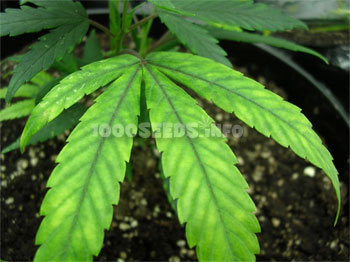
In case of deficiency, with the first administration and treatment with calcium and/or magnesium, a strong dose of e.g. Cal-Max should be given (15-30 ml/10 L). With further fertilising, the dose is then reduced by half.
Salinisation of the substrate
Over time, fertiliser salts can accumulate in the coco substrate and lead to salinisation of the soil. These deposits of salts can lead to all kinds of problems, just like with soil, among other things because they make the pH value unstable. The big advantage is that coco is much easier to rinse than soil. If you regularly rinse the plant pot with pH-corroded water every 3 weeks, no problems will occur.
For rinsing, use 2 litres of water per litre of pot content for a planter.
You'll soon find out more about coco-grow, see you in the days to come 😉






